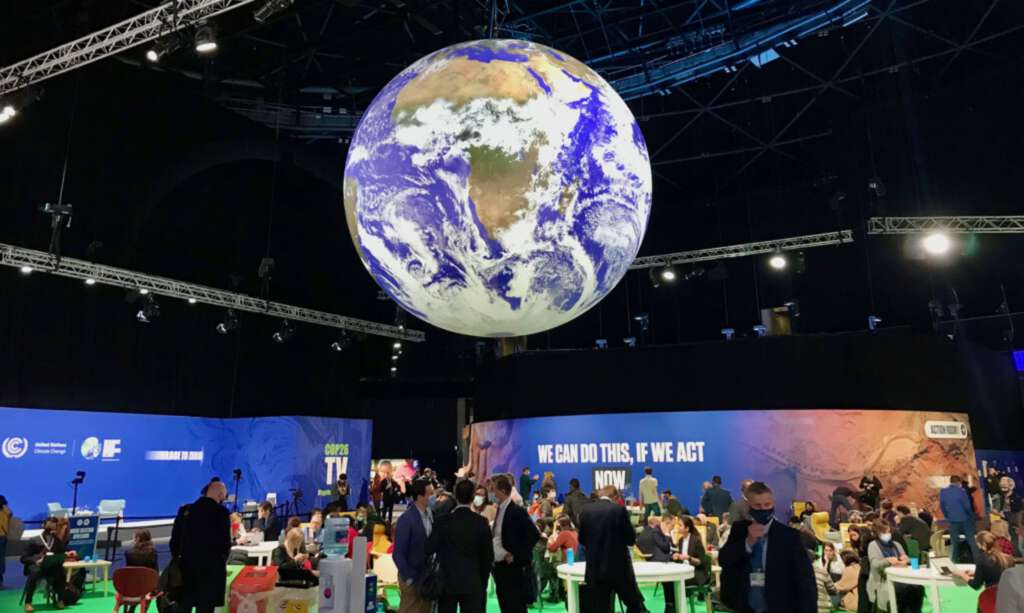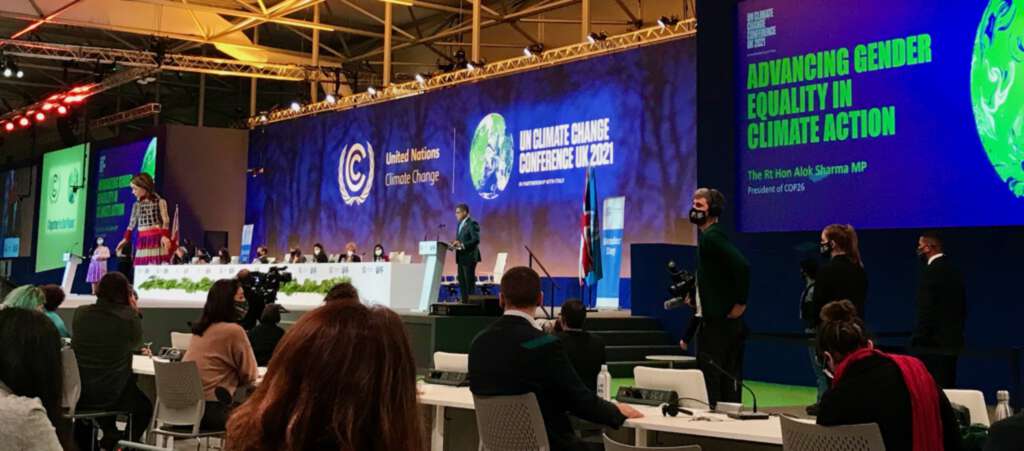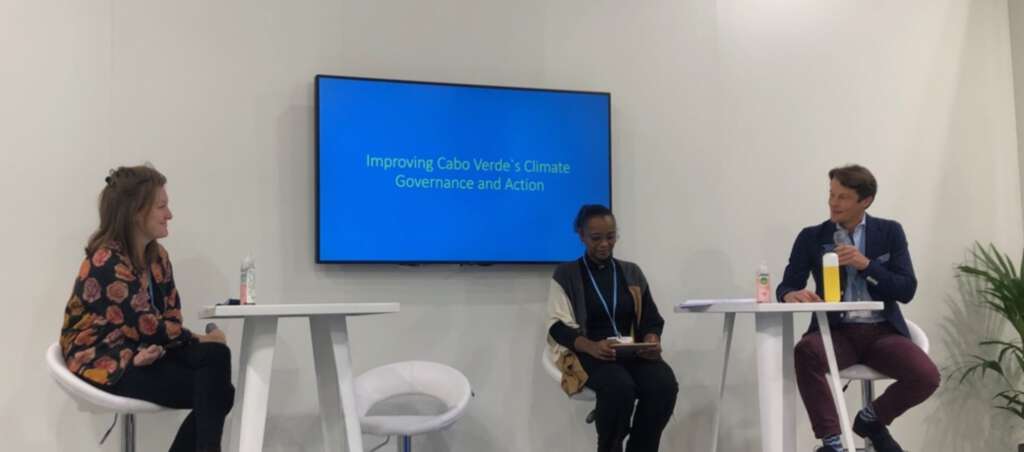COP 26 - The opinion of our Environment and Climate Change Expert
What is actually COP?
A wholly uninspired acronym for “Conference of the Parties”, meaning signatories (197 governments) to the United Nations Framework Convention on Climate Change (UNFCCC), a convention created at the Rio Earth Summit of 1992. Two other COPs, originating from the same summit, are publicly less known: the one on biodiversity and another to combat desertification.
 We can do this, if we act now ! A large rotating planet earth in the climate action-zone reminds participants about what is at stake at COP26.
We can do this, if we act now ! A large rotating planet earth in the climate action-zone reminds participants about what is at stake at COP26.
COP meetings happen each year and this was the 26th edition taking place in Glasgow, United Kingdom. Not all COP are equal. When the Paris agreement was signed in 2015, it was agreed that every five years countries would return with more ambitious plans to reduce their greenhouse-gas emissions and tackle global warming. Because the coronavirus pandemic caused COP to be cancelled in 2020, this year is one of these “big COPs” with a comprehensive stocktaking exercise for reviewing and raising targets.
 COP26 president Alok Sherma delivering an opening speech on the Gender Day.
COP26 president Alok Sherma delivering an opening speech on the Gender Day.
What really goes on during COP climate negotiations is opaque to outsiders and often infuriating to insiders. Starting off with world leaders on stage talking about climate change, concentrating either on what their countries intended to do about it (if rich) or on the dire consequences they face (if poor). The remaining days typically have broad themes—such as energy, finance, adaptation, loss and damage, transport, nature, gender and youth.
Off-stage members of each country’s delegations begin negotiating, drafting papers that set out their positions on various issues. These meetings should be watched over by accredited “observers”—normally from civil-society groups like NGOs, many from the developing countries most affected by climate change. The resulting texts are written in the strange, sterile language of international diplomacy and an excessive amount of time is spent on nitty-gritty wording: debates on whether something “should” or “will” happen can stretch on for days. The aim of the COP process is to draft a document that all countries can agree on.
Why and in what context does LuxDev participate?
The Government of Luxembourg participated at COP26 with a high-level mixed delegation composed of representatives of the Ministry of Environment, Climate and Sustainable Development (MECSD), the Ministry of Foreign and European Affairs (MFEA), the Ministry of Transport as well as two representatives from the Luxembourg parliament. Since 2017 LuxDev’s Environment and Climate Change expert is accompanying the official Luxembourg delegation assisting in bilateral meetings with our homologues from our cooperation partner countries. During these meetings the expert can provide firsthand input from ongoing projects and can share his valuable advice with the group.
Given the new strategy for the integration of climate change into development cooperation (MFEA), as well as the increased focus from the Luxembourg international climate finance for adaptation and resilience related work (MECSD), the informal exchanges are highly valuable to understand priorities and focus areas which will have an influence on LuxDev’s work.
Another good reason for participation is the opportunity to expand the professional network and to seize the opportunity to meet and discuss with key stakeholders e.g. the Green Climate Fund’s focal point for LuxDev’s concept note.
At COP26 LuxDev supported the preparation and organization of a side-event with Cabe Verde at the EIB/BENELUX pavilion to present the future climate governance and climate action programme (CVE/401).
 Side event on Improving Cabo Verde’s climate governance and action with Mrs. Virginie Gilbert (Climate change and NGO desk officer, MEFA), Mrs. Agueda de Burgo, Director of the Cabo Verde National Department of Environment, Baas Brimer (Expert environment and climate change, LuxDev)
Side event on Improving Cabo Verde’s climate governance and action with Mrs. Virginie Gilbert (Climate change and NGO desk officer, MEFA), Mrs. Agueda de Burgo, Director of the Cabo Verde National Department of Environment, Baas Brimer (Expert environment and climate change, LuxDev)
What are the main outcomes and lessons learnt from COP26?
During the very first days of the COP several smaller but not less meaningful declarations were made, giving a positive and committed tone at the beginning of the conference.
These pledges include:
The Leaders’ Declaration on Forests and Land Use. Over 130 leaders, accounting for more than 90% of the world’s forests, have committed to work together to halt and reverse forest loss and land degradation by 2030. (note: all our partner countries except Lao PDR are signatories).
A methane pledge. America and the European Union announced they would aim to cut anthropogenic emissions of methane, a potent greenhouse gas responsible for more warming than carbon dioxide. The cuts envisioned are of 30% by 2030, measured against 2020 levels.
Nuclear is not green. Under the leadership of the Minister of the Environment, Mrs Dieschbourg joined by her homologues from Germany, Austria, Denmark, and Portugal a declaration was made to call upon the EU Commission to exclude nuclear power from the EU taxonomy, a piece of legislation that defines what qualifies for sustainable investments.
Ahead of COP India and China made new pledges to reach net-zero emissions by 2070 and 2060 respectively… but contradictory also the same two countries weakened the final declaration by not recognizing that a coal phasing out is urgently needed.
In parallel 23 countries have promised to stop new coal power schemes, and to phase out existing ones and 20 governments have promised to stop financing oil, coal, and gas projects beyond their borders.
US-China pact. A symbolic pact between the US and China is aiming at boosting climate cooperation to achieve the goal of limiting warming to 1.5°C, as set out in the Paris Agreement.
 A neon sign by artist Cornelia Parker is yet another urgent appeal to the public at COP26 and beyond.
A neon sign by artist Cornelia Parker is yet another urgent appeal to the public at COP26 and beyond.
More than hot air
The Paris Agreement laid out a plan for avoiding dangerous climate change which included "pursuing efforts" to keep warming under 1.5°C and well below 2 degrees. Despite pledges made at COP26, the world is still nowhere near its goals on limiting global temperature rise, a new analysis shows.
Analysing governments' actual policies - rather than pledges - before COP26, we were on course for 2.7°C of warming by 2100, suggests Climate Action Tracker. With the new/revised nationally determined contributions now we are looking at 2.4°C. That is an improvement.

The Tracker is backed by a number of organisations including the prestigious Potsdam Institute for Climate Impact Research in Germany.
However, the world's outlook has improved since the Paris climate summit in 2015 when Climate Action Tracker estimated the policies put the planet on track to warm by 3.6°C.
COP OUT
Outside the main venue the “green zone” absorbs the so-called observers, civil society representatives, science and research bodies.
 JB Redde (his activist name) is a French primary school teacher who took his pre-retirement after realising that the climate crisis is an existential threat and a generational challenge and that he can have a bigger impact as an “international activist” as he calls himself.
JB Redde (his activist name) is a French primary school teacher who took his pre-retirement after realising that the climate crisis is an existential threat and a generational challenge and that he can have a bigger impact as an “international activist” as he calls himself.
The climate activists are well organised with many smaller events in and around the city of Glasgow, marching for more climate action and blocking the entrance to banks like J.P. Morgan who are heavily involved in financing the fossil fuel industry.
COP26 was an exclusive event because many representatives from CSOs and mainly indigenous communities coming from the “global south” could not make it to Glasgow because they were not able to get the required Covid19-vaccination or because they come from a red-listed country and strict quarantine measures applied.
↑ Haut de la page